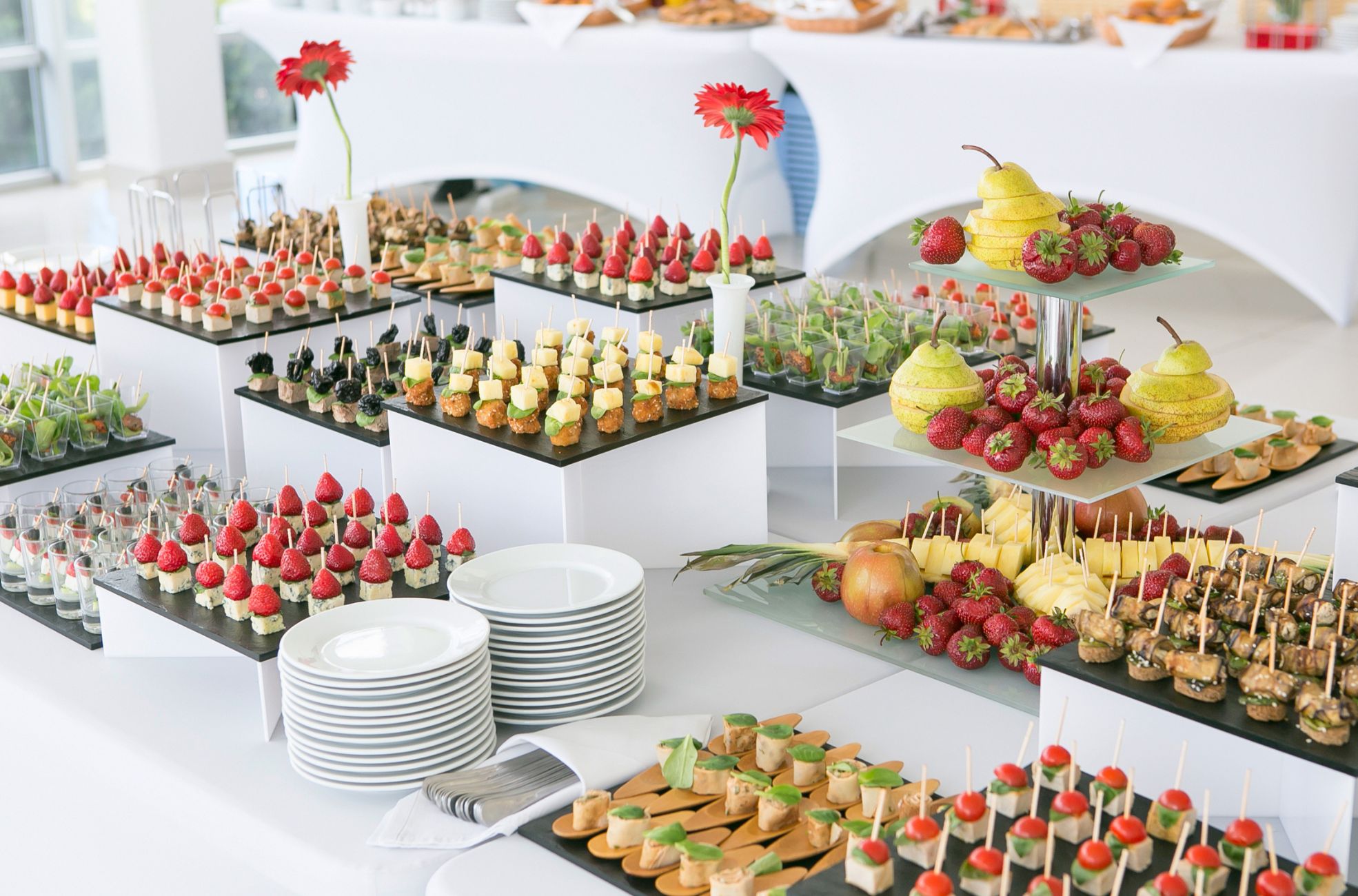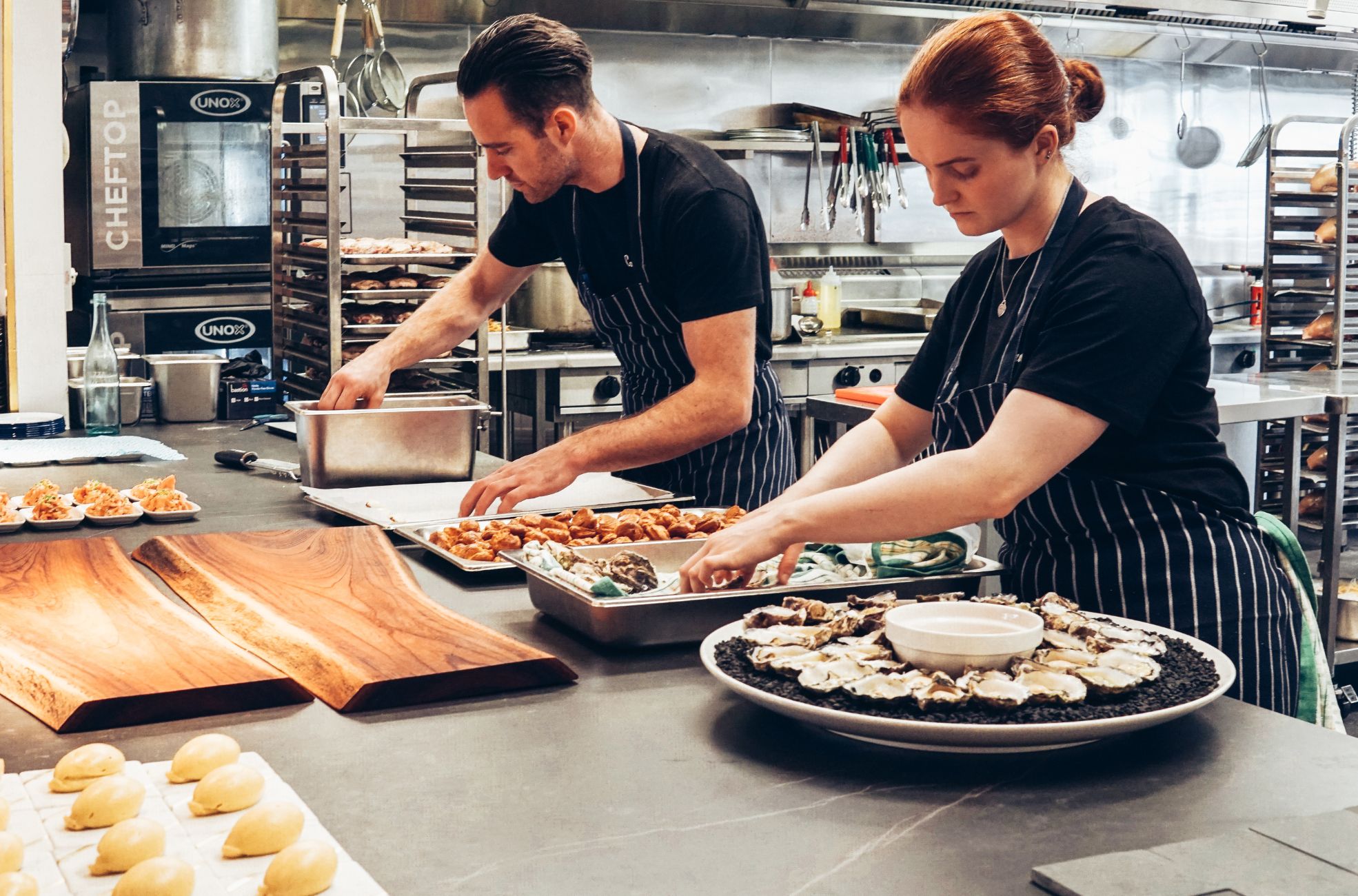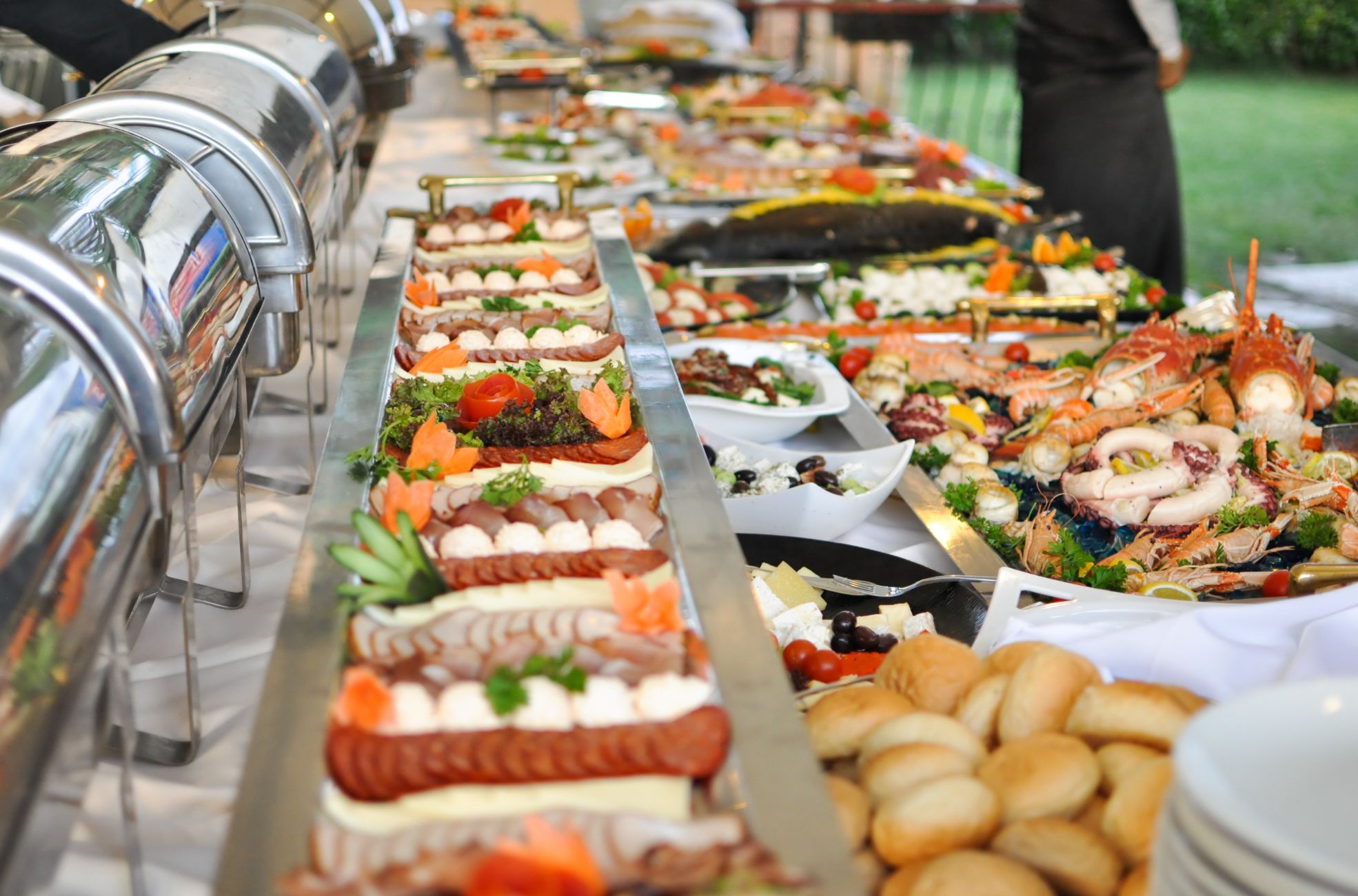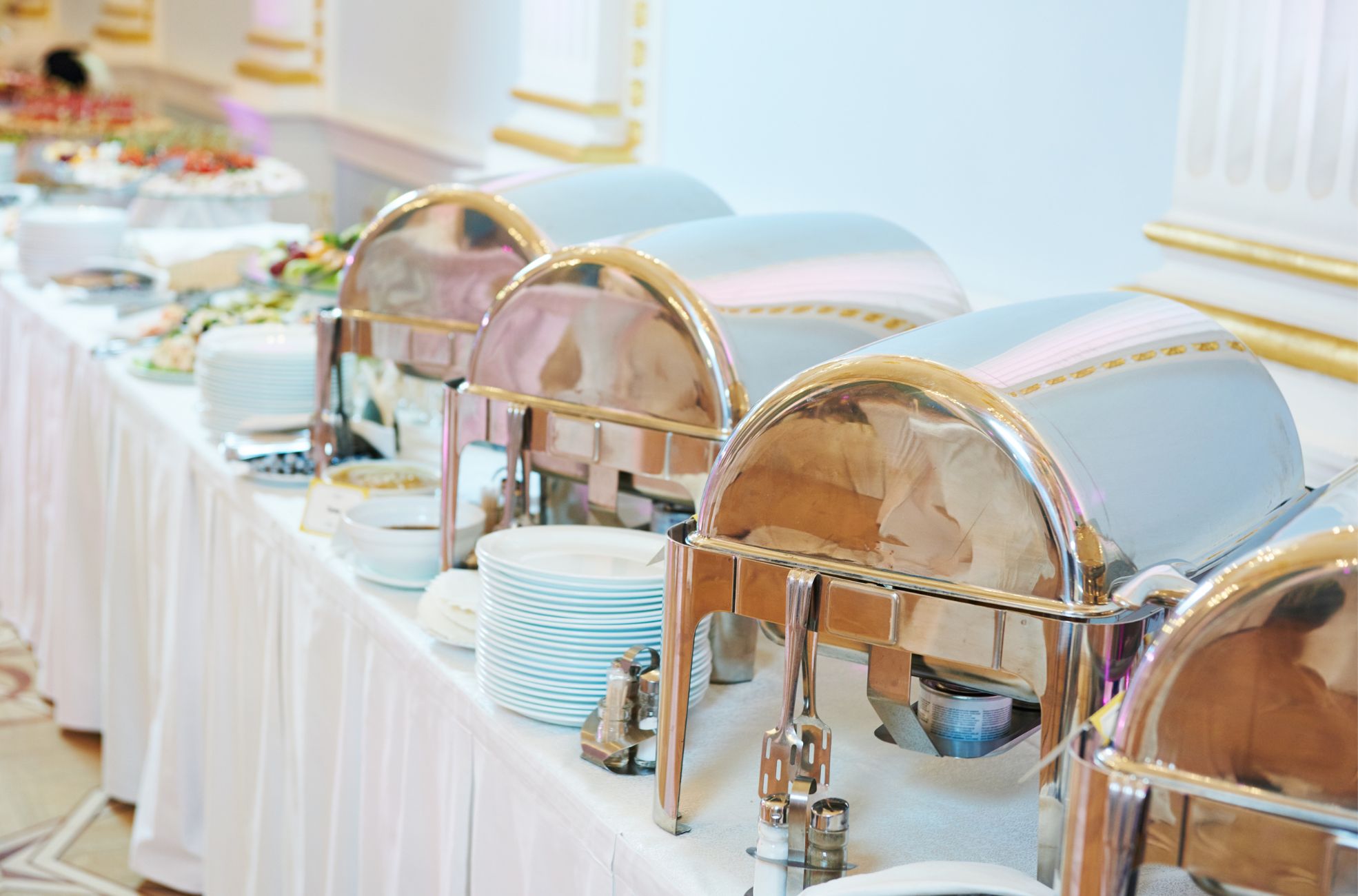Catering for large-scale events can be a monumental challenge, with the complexities of menu selection, budgeting, ingredient sourcing, and staff management, to name a few. You’ll need meticulous planning, proficient organisation, and exceptional service delivery to tackle this complex task successfully.
Our guide offers a comprehensive toolkit of tips to help you navigate the hurdles and ensure a memorable experience for all guests. No matter the size of the event, this guide will give you the confidence to handle it all – from the initial preparations to evaluating the event’s success. So, let’s gear up and get ready to explore the exciting world of large-scale catering!
Initial Preparations in Catering
When catering for large-scale events, the initial preparations can make or break your success. These preparations involve getting a handle on the event’s scope, picking a suitable menu, budgeting money for catering costs, and finding top-notch ingredients.
Understanding the Scope of the Event
The first step in catering for a large-scale event is getting a handle on the event’s scope. You’ll need to know the event’s purpose, the number of guests, and the client’s specific requirements. This knowledge will guide all your decisions, from menu selection to staffing and logistics. Remember, large-scale catering isn’t a walk in the park – it requires precision and meticulous planning.
Selecting a Suitable Menu
Once you’ve got a clear picture of the event’s scope, it’s time to craft a suitable menu. This is a critical part of large-scale catering as it directly impacts the guests’ experience. When crafting a menu, you’ll need to consider the variety of dishes, the dietary restrictions of the guests, and the feasibility of mass production without compromising quality. Offering several alternative menus can cater to the guests’ different preferences and dietary needs. Remember, the quality and taste of the food are paramount for a successful event.
Budgeting For Catering Costs
Budgeting is another critical part of the initial preparations in catering. You’ll need to prepare and consider all potential costs, including food, beverages, staff wages, transportation, and equipment rentals. A detailed budget should include line items for all these costs, with estimates based on the expected guest count. It’s also important to track all expenses and compare them with the projected costs to ensure you stay within budget.
Sourcing High-Quality Ingredients
The final part of the initial preparations in catering is sourcing high-quality ingredients. The quality of the ingredients directly impacts the taste and presentation of the food and, therefore, the event’s overall success. When selecting ingredients, you’ll need to consider factors such as supplier reputation, consistency of supply, freshness, and seasonality. Building relationships with reliable suppliers and local farmers can ensure a steady supply of high-quality ingredients.

Effective Kitchen Workflow
An efficient kitchen workflow is crucial when catering for large-scale events. This encompasses everything from the layout of your catering kitchen to the timing of food preparation, adherence to food safety standards, and proficient food handling.
Organising the Catering Kitchen
A commercial kitchen layout can significantly influence productivity, food safety, and guest satisfaction. This involves optimising your storage space and designating areas for different equipment and tasks. For instance, suspending frequently used pots and pans can conserve shelf space and make them readily accessible. Similarly, designating areas for small wares, food processors, and mixers can help maintain equipment organisation and streamline your workflow.
Open shelving units, such as metro racks, can facilitate item identification, particularly in compact kitchens with limited space. Walk-in refrigeration units provide:
- Ample space for arranging refrigerated items.
- Employing the first in.
- First out method to minimise food wastage.
Labelling items in the fridge, freezer, and pantry with purchase or opening dates and expiry dates can aid in organisation and prioritise food hygiene and safety.
Scheduling Food Preparation
In large-scale catering, timing food preparation is a multifaceted task that demands meticulous planning and precision. It’s crucial to devise a menu that will not only please guests and align with the client’s budget but also bolster your standing in the industry.
Ensuring Food Safety Practices
Adherence to all food hygiene and safety standards is vital to catering significant events. This involves proper storage and organisation of food items and compliance with food safety regulations during food preparation and service. For instance, ingredient bins are essential for storing and organising dry ingredients, minimising handling and enhancing food safety practices and segregating your storage area into dry storage and perishable goods storage aids in maintaining food quality and safety.
Handling Food with Efficiency
Proficient, food prep and handling is key to the success of large-scale catering. This extends beyond food preparation to include transportation, storage, and service. A strategy for delivering the food to the event venue, storing it appropriately, and maintaining its quality throughout the event is essential.
Staff Management for Catering Services
The process of managing staff for large-scale catering events is multifaceted and requires meticulous organisation. The scale of the event and the financial resources available will dictate the number of staff members you can employ. It’s essential to bring on board seasoned individuals who can juggle various roles and tasks, ensuring the service quality remains high.
Recruiting Experienced Staff
During the recruitment process, it’s essential to identify the specific roles that need to be filled, such as servers, bartenders, and kitchen personnel. You’ll need to seek out individuals who are agile, attentive, and responsive to guests’ needs. Prior experience in similar events can be a significant advantage. Detailed and specific job descriptions should be provided to potential staff members, outlining key tasks, desired skills and qualifications, and the remuneration offered for the position.
There are numerous avenues to find competent catering staff, including job boards like Indeed, ZipRecruiter, and LinkedIn. Professional platforms like Qwick, which links businesses with qualified hospitality freelancers, can also be beneficial. Referrals from friends, business colleagues, and industry professionals can be valuable for finding catering staff. It’s crucial to validate each candidate’s credentials and check references before making a hiring decision.
Training for Customer Service Excellence
After recruiting your team, providing comprehensive onboarding and training is vital. In the hospitality and catering sector, customer service training is essential for employees to meet guests’ expectations. Training can encompass a broad range of topics, such as culinary skills, preparing food, service, table clearing, and being a gracious host.
The absence of formal customer service training can have negative repercussions, as inattentive or indifferent employees can lead to dissatisfied customers and negative word-of-mouth. Conversely, well-trained employees can create positive experiences for customers. Training should equip employees to handle conflicts and manage stress, providing a serene environment for guests. Feedback from guests through comment cards, online surveys, and social media reviews can help gauge the effectiveness of customer service training programs.
Assigning Roles and Responsibilities
Assigning clear roles and responsibilities is integral to the seamless running of large-scale events. Clear expectations should be set, and a designated leadership hierarchy should be established. Food safety and quality should be a top priority, with guidelines for food preparation and sanitation accessible to all staff members.
Communication Among Staff
Effective communication among staff members is vital for successful large-scale catering events. Regular employee engagement surveys can provide valuable feedback and help monitor the satisfaction and retention of both catering managers and staff. Rewards and recognition should be tailored to each individual’s preferences.
Fostering a positive work environment and consistently enhancing management skills can contribute to staff satisfaction and growth. Planning for contingencies, using employee scheduling software, and promoting strong communication among staff members is essential for seamless operations.

Presentation and Service Tactics
How you display your culinary creations and the quality of service you deliver can significantly influence the overall event experience.
Perfecting Food Presentation
The art of food presentation extends beyond mere aesthetics; it can elevate the perceived worth of a meal and even enhance its flavour. Several techniques can be employed to master this art.
For example, elevating food on the plate can lend an air of sophistication to a dish. This can be achieved by using colourful leaves, ice cream or sorbet quenelles. Slicing meat horizontally and spreading out the slices can also highlight its quality and create a more visually pleasing presentation of cooked food.
Experimenting with textures, foams, and sauces can make a dish look more intriguing and visually attractive. Contrasting hues can draw the eye and make a dish more visually appealing, using natural colours like matcha or powdered sugar.
The selection of the right plates, in terms of size and colour, is also crucial for food presentation. The plating style should sync with the event’s ambience, with more straightforward presentations for uncomplicated food and flavours and artistic presentations for upscale events.
Adhering to Timely Service
In the catering industry, punctuality is paramount. Ensuring that dishes are plated and served at the optimal temperature. This necessitates meticulous planning and coordination between catering chefs, factoring in the plating time in the dish’s preparation and informing guests of the expected serving time.
Ensuring Food Portion Control
Maintaining portion control is another crucial aspect of catering large-scale meals for events. It’s important to create a nutritionally balanced meal to achieve the right balance of protein, carbohydrates, and vegetables. The appropriate portion size also ensures that there’s sufficient food for all without compromising on the quality or presentation of the dish.
Incorporating Guest Interaction and Engagement
Catering extends beyond the provision of food and beverages; it’s about crafting a memorable experience. This involves more than just delivering good food and drinks. It’s about creating an ambience and atmosphere that will make your guests feel valued and leave a lasting impression.
Interactive stations, for instance, are an excellent way to engage guests and make the event more memorable. You could establish a DIY cocktail bar, a dessert station, or a live cooking station. This provides entertainment and allows guests to participate in the event.
Incorporating sustainability and responsible eating elements into your service style can also add a unique touch to the event. This could involve using locally sourced ingredients, reducing food waste, or offering vegetarian and vegan options.

Evaluating Catering Success
Assessing the outcome of a large-scale catering event involves multiple aspects. These include obtaining client feedback, examining food waste levels, evaluating staff performance, and determining profitability and ROI.
Gathering Client Feedback
Insights from your clients are instrumental in determining the success of a catering event. Various methods can be employed to collect this feedback, such as direct conversations, feedback forms, mobile POS feedback systems, and online customer surveys. It can be beneficial to make it convenient for clients to provide feedback through mobile POS systems and online surveys. Offering incentives, like discounts or gift cards, can further encourage clients to provide feedback. However, it’s vital to collect feedback and implement necessary changes to enhance the catering experience.
Inspecting Food Waste Levels
Examining food waste levels can provide valuable information about the efficiency of your catering operation. Excessive food waste in catering tips could indicate overproduction, inadequate portion control, or a menu that only resonates with the majority of guests. By monitoring and analysing food waste, you can identify areas for improvement and adjust your menu planning and food production processes accordingly.
Reviewing Staff Performance
The effectiveness of your staff is another crucial factor in the success of a catering event. A structured performance appraisal process can offer your employees constructive feedback that can assist them in developing successful career paths within your organisation. This process should involve gathering documents, reflecting on the employee and their performance, and soliciting their input. This inclusive approach can result in increased commitment and engagement from your staff, ultimately enhancing the overall performance of your catering team.
Assessing Profitability and ROI
Finally, determining your catering event’s profitability and ROI clearly indicates its financial success. Profitability is a crucial metric that businesses monitor to assess their financial health and identify areas for improvement. ROI, on the other hand, compares the profit generated by an investment to the cost of that investment.
Monitoring ROI and profitability can provide valuable insights to guide future decisions about your catering business operations. To calculate ROI, you’ll need to compare the revenue generated from the event with the cost of that event. Similarly, to calculate profitability, you must subtract the cost of goods sold (COGS) and other operating expenses from the total revenue.
Wrapping Up Your Large-Scale Catering Event
Catering for large-scale events might seem complex, but with careful planning, clear communication, and attention to detail, you’ll find it rewarding and memorable.
You’ll need to get a handle on the event’s scope, create an inclusive menu, manage logistics, coordinate a skilled team, focus on presentation, maintain food safety, and evaluate the event’s success. Each of these steps is a crucial part of successful catering management.
With these insights and strategies, you’ll be ready to tackle the unique challenges and opportunities of catering for large-scale events. Remember, the key isn’t just about serving good food, but about crafting a memorable experience, ensuring satisfaction on all fronts, and constantly learning and improving with each event you cater.







